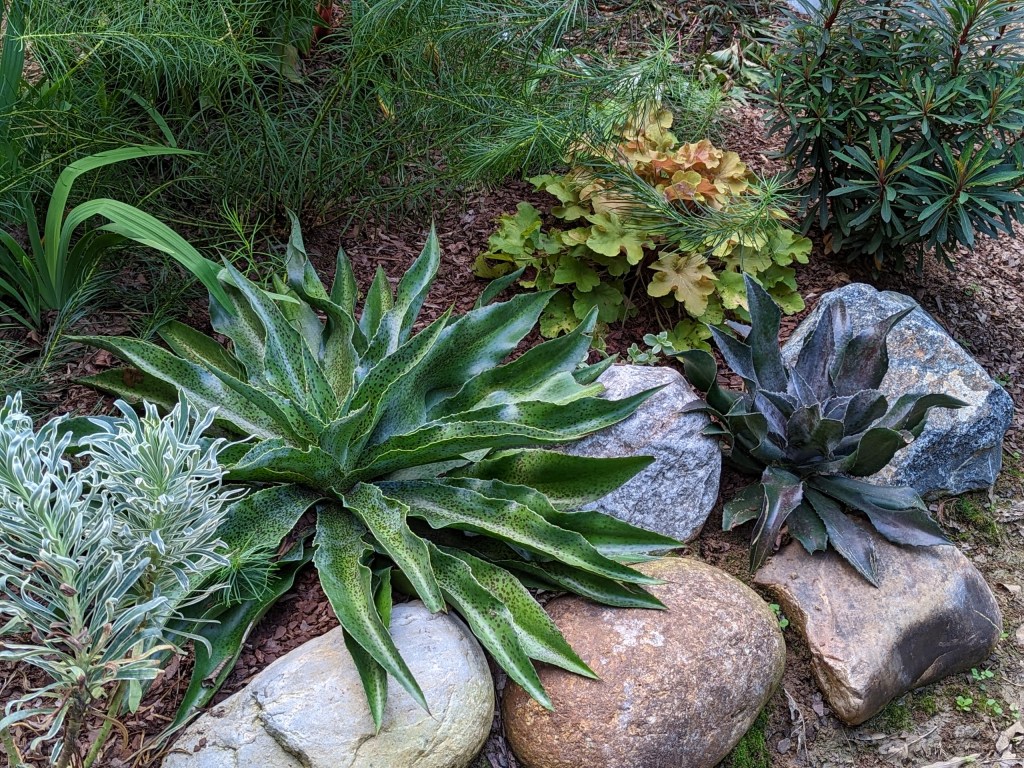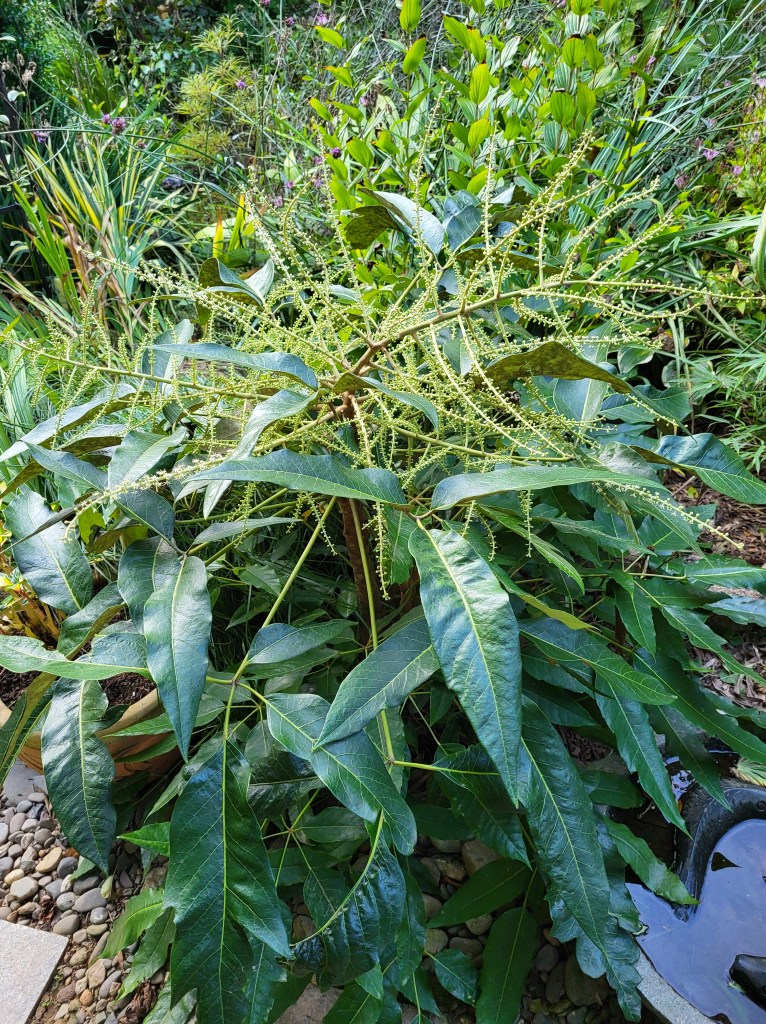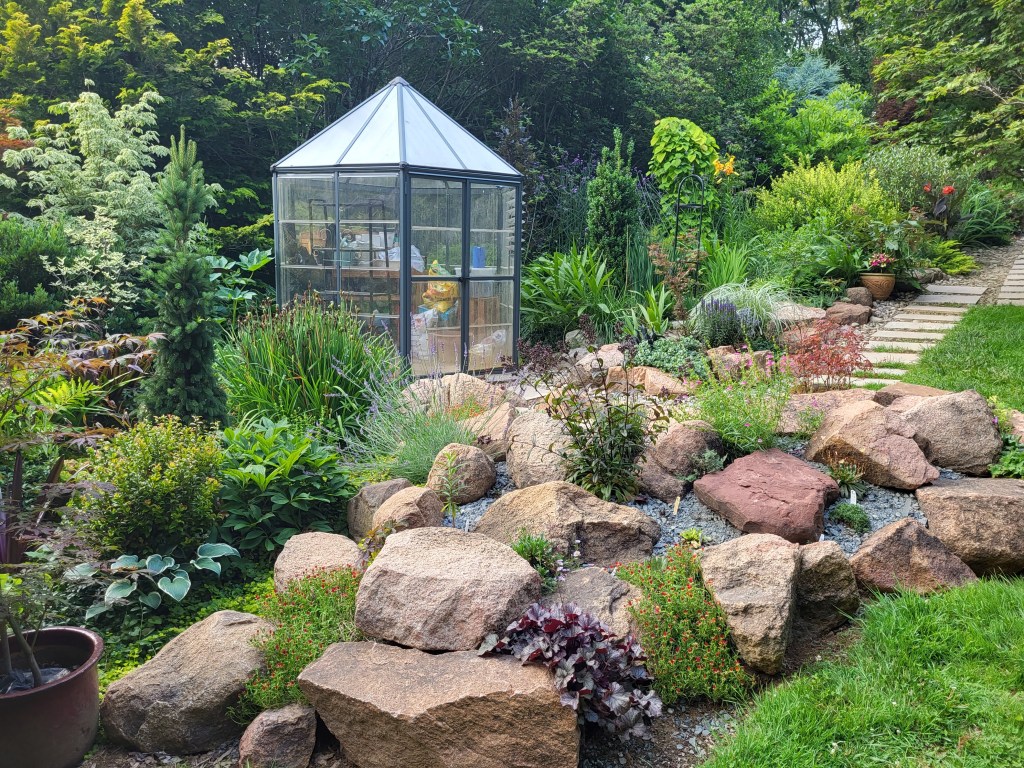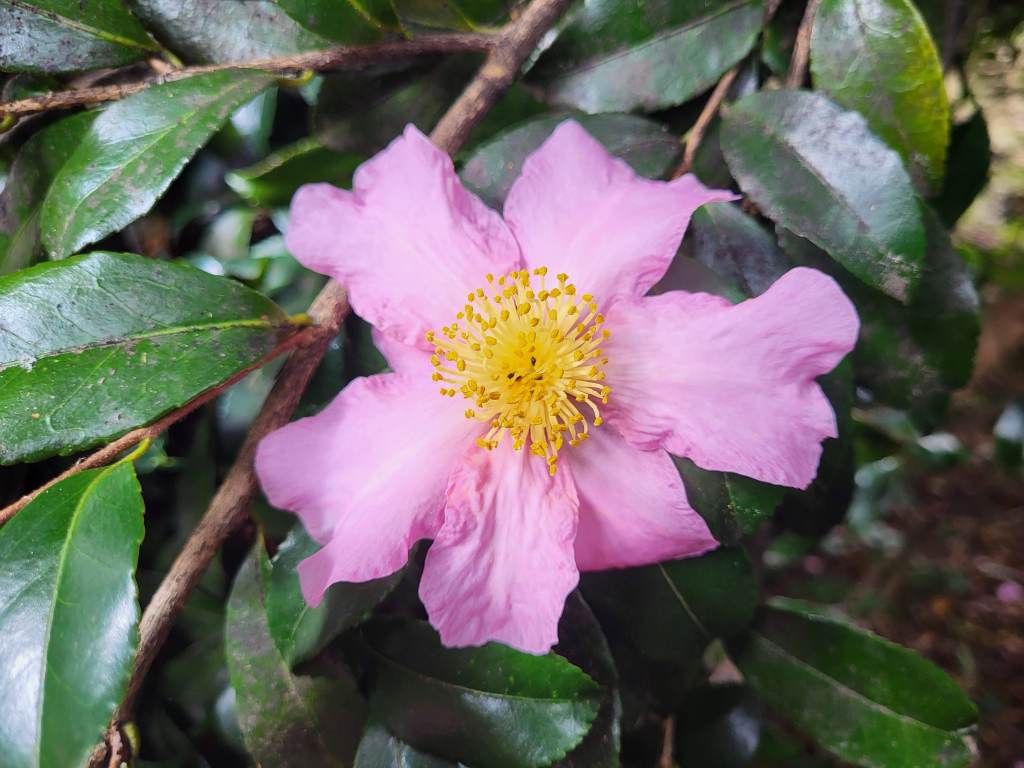The season’s first frost or freeze was forecast for last night, so despite doubts I hauled the non-cold hardy succulents and cactus-like euphorbias to the basement. Too often, this annual chore is undertaken in a panic with fading light and a howling, chilly wind, but the day was mild and thus my questioning the forecast.

In fact, there was no freeze or frost, or at least the frost was so light it was gone by five in the morning, and while I could have delayed moving the containers, it was probably best to move all plants since one might be tender enough to be damaged by the thirty-five degree night (Fahrenheit). Typically, I wait until the last moment possible with no harm done, so this was more cautious, but don’t get too hopeful that I’ve changed my ways.

This is the day I most appreciate the lightweight pots and wonder why I continue to recycle new plants into the heavy, ceramic containers that are more ornamental, but should be reserved for plants left outdoors to perish. Even worse are the three large and three smaller pots for the aeoniums (succulents, above) that are filled with a well drained, but much heavier mix of sand, gravel, and a lesser amount of lighter soil.

So, all pots were relocated with a minimum of trouble with only one glossy, ceramic and awkwardly shaped container holding a tree fern nearly slipping from my grasp. I must double back in the next few days to place saucers under each of the pots, and I suppose it will not be long until the first hard freeze when the mangaves (above) and one tender schefflera must be dug and potted to move indoors. This is the time I wish for a larger, heated greenhouse instead of the tiny, cold greenhouse (below) that protects only by a few degrees. The tiled section just inside the basement door will be packed tight in a few weeks, though I hope that Barbara will permit me to add a few plants to her decorating by relocating several to the sunroom once its construction is complete in a few weeks.

This morning, it occurs to me that the staghorn ferns, a variety of elephant ears, and a large agave should have been brought in, but I suppose since I wasn’t fully convinced the cold would come I didn’t pay close enough attention. They’ll be fine, I expect, and the next chances for a freeze are a week away, so there’s plenty of time to get around to it.

Our son tells my wife that he has cut and dug his cold tender bananas and other tropicals, treated them for insects and carefully inspected for frogs and other beasts that should be left outside as the plants move indoors. I understand that Barbara relays this story to shame me since I do no such treating or inspecting. Yes, on occasion a frog slips in, and I think once perhaps a small snake, though one was recently relocated from the basement long before plants were moved indoors. We suppose the mom is in there somewhere.

This last week of October, I can see the garden fading, though in some cases the change of season means more brilliant color returns to Japanese maples that fade in the summer heat. I am ready to move on from hostas that were nibbled by deer in late summer, but even before this overnight cold leaves were turning and falling, as much from our summer drought as the seasonal change.

The garden has been planted so there is something flowering every day through the year, with several blooming at any time in winter, but this barely distracts from the long period of bareness until spring. For this reason, I do not cut the evergreen leaves of the hundred or more hellebores (below, and hundreds more seedlings). Green is better than nothing, and at this time evergreen hollies and conifers are most valued.

I think, finally, the garden has reached the point where major additions can no longer be crammed in. Next year, I think, I’ll be pruning to keep neighbors from overwhelming one another, so I must not be fooled by open spaces occupied until recently by perennials that vanish in the cold. A few of the mangaves that are dug and stored indoors now spread two feet or more, so I must remember these are not openings for new plants.

The fading of the garden is not my favorite time of the year. I will take solace in the late flowers (above) and autumn foliage colors, then settle in for the overly long period until the garden stirs from its winter slumber. Daily garden strolls will be brief with fewer ornaments, but I look forward to planning and planting the space beside the new sunroom that was until last week covered by the larger deck. If there was ever an idea that Barbara and I would move south in our imminent retirement to shorten our winters, the expenditure for the sunroom has voided such thinking, though I could never give up on this garden that now dates back thirty-four years.
Thank you for sharing your thoughts,
I feel much the same but have not taken the trouble to put it in writing. Thanks for the lovely photos.
I understand your obsession so well.
My garden, though nowhere near the size or expanse of yours, is also my treasure and pleasure.
I had moved once before, hoping that the new owner of my house would enjoy my garden. One day, I drove by the old house and was horrified to see every tree, shrub, and plant hacked up—piled high—located at the curb waiting for trash pick up.
Even 50 year old cedars and azaleas, planted when the house was built (long before our arrival), that had been in stellar shape, were lying in the pile. The new owner had decided to “flip” the house, so a garden was too much of a “liability”.
My heart was broken. All I could think of were all the gorgeous plantings that I had left behind and should have taken with me.
This year I had to retire, and relocate, due to family obligations. But THIS time the garden, small but lush, was going with me. What was too large to be moved, I took cuttings. It took a multitude of trips, but 95% of my “baby“ has now been transplanted to the new home. This was laborious. It was painful. But it was worth every minute.
As anyone who has moved knows, it is a hectic and crazy time. We dug-replanted-repeated many times. Now the problem is remembering what went where. Next year will most likely be more digging, planting, and relocating. And I will enjoy every minute.
Thank you for your guidance over the years— I look forward to your next missive and tales of the sunroom build!
My wife understands that we’ll be in this house until I’m unable to care for the garden. I hope that’s many years from now, but whenever, this house and garden will be a hard sell. The garden is for me, though I hope the right buyer will keep it going, but realistically one look will scare off a majority of prospective buyers. If the plan by a new buyer will be to clear the garden, this one will take a bulldozer.
Thank you for always being a bright light among my emails!
Is that a pencil succulent I see towards the rear? I once had an absolutely gorgeous “Firestick” one that I eventually lost due to paying lax attention to the weather. I wasn’t too disappointed though, because it was a pain keeping it away from our pets, to which it’s fatally toxic. It was a very attractive plant though.
Yes, this is a pencil cactus euphorbia. It stayed outside for several nights in the upper thirties, but I don’t think it would survive a freeze.